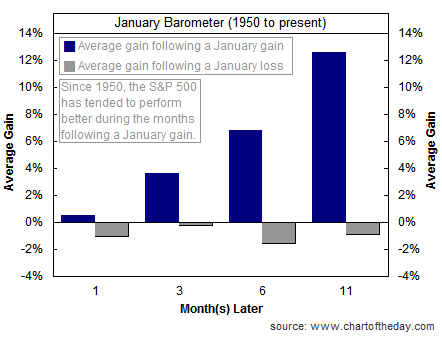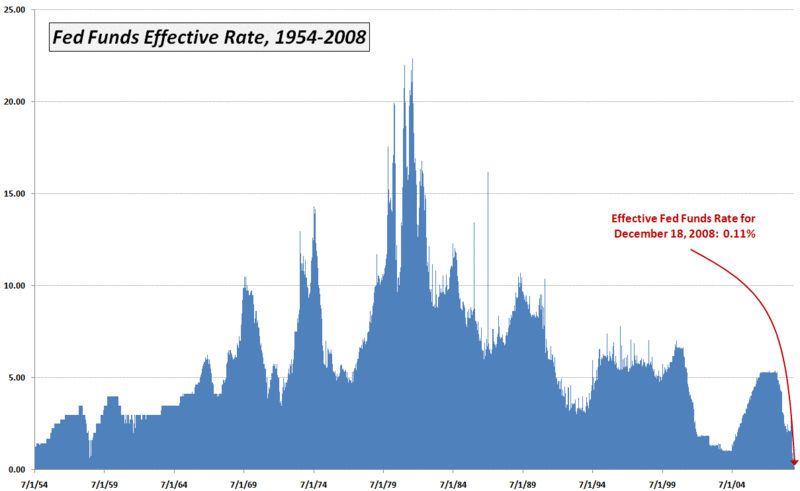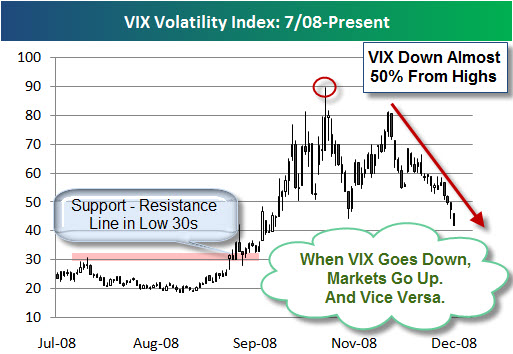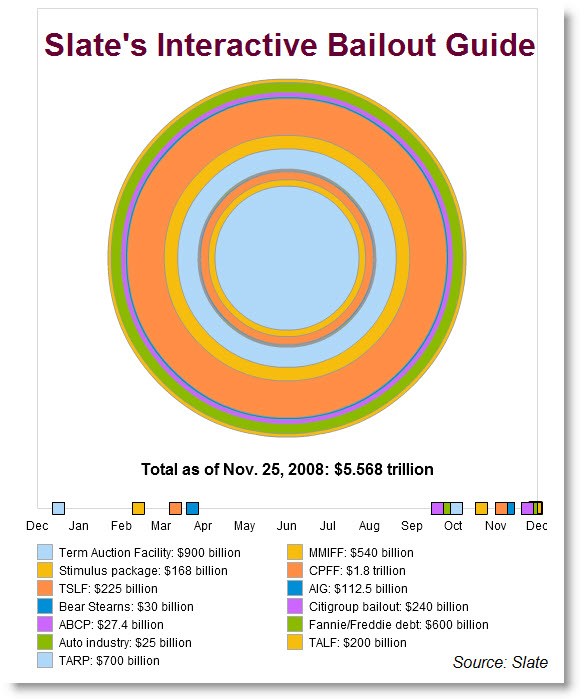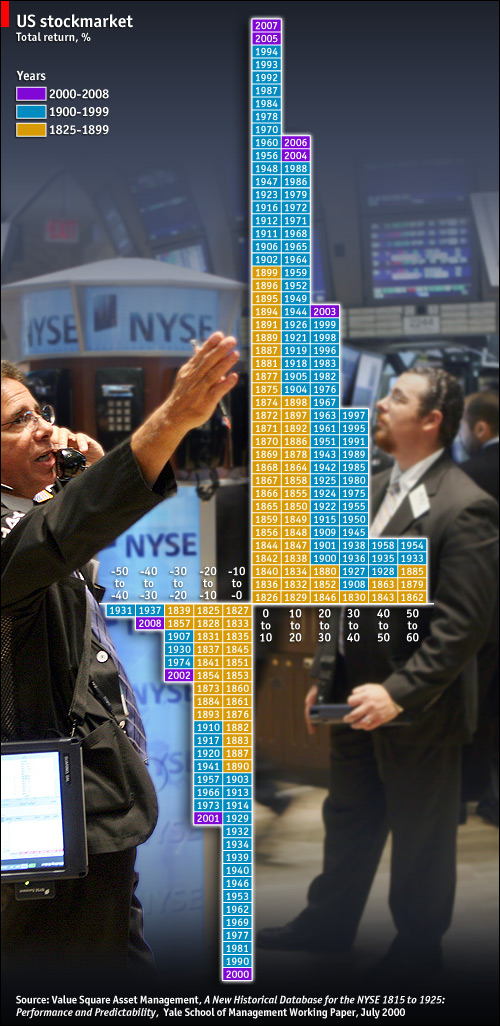
This was the first full week of trading in 2009. While the markets pulled-back a bit, most defended their technically-important 50-day moving averages.
Two Steps Forward, One Step Back: This week started with 80% of the S&P 500 stocks sitting above their 50-day moving averages. That is stat-geek-speak for "there has been a significant rally off the November bottom." Moreover, people are feeling good about the market's progress. Investors Intelligence
readings show people are more
bullish now than they were during the rally off the July low.
Regardless of my analysis or opinions, we rely on mechanical trading models to determine our market posture. Still, I follow the markets closely, and the market's consistently negative bias surprised me this past week. That might be good though. We worked-off a lot of the overbought condition and put things in place for a more natural Obama Inauguration Rally.
How Bad Was 2008? The chart on the right is from The Economist, and shows the distribution of US Stock Market Returns Since 1825. One of the things it shows is that 2008 was the second-worst year of performance.
So as awful as 2008's performance was, historically, remember that it ended with a 20% rally off the bottom to end the year.
The real question is whether you think the rally will last? Is it a Bear-Market
Rally sucker play, or a real opportunity to put some capital back to
work?
I predict big changes are coming (not hard to do with the economy where it is and a new President about to take office). So, here are some data to help point the way.
Here are a Few of the Posts I Found Interesting This Week:
- Cover your eyes, then check-out these 2008 Year-End Returns for World Markets.(Bespoke)
- US Unemployment Back to 1945 Levels; 2.6MM Jobs Lost in 2008. (Citywire)
- Oxymoron? A relatively sane Elliott Wave market
prediction for 2009. (Yelnick) - Bear Rally or Bull Market? Are too many people too bullish too quickly? (Hulbert)
- The Fed is Flooding the Markets with Cash. (Clusterstock)
- WSJ's "The End of Wall Street" video series (Click to Watch)
- The End of the Financial World As We Know It? (NYTimes Part 1 & Part 2)
- Ironic that Satyam (which means Truth) didn't outsource Fraud, they did it themselves. (FT)
And, a little bit extra:
- Putting tongues firmly in cheeks, Porn Industry seeks $5BB Federal Bailout. (CNN)
- Obama Fighting for his Blackberry. This may be a fight he loses. (TechDirt)
- Why do Investment Swindles continue to work? (WSJ)
- Can Risk Be Adequately Quantified? (Naked Capitalism)
- This year China's
Internet users will surpass the entire population of the U.S. (Kedrosky) - The Bull and Bear Cases for Hedge Funds. (Bull: Seeking Alpha and Bear: Yahoo Finance)
- Balanced Commentary on the Middle East's Hundred Year War (Economist)
- Funny list of "Stuff White People Like" – and I do like most of it. (Blog)

